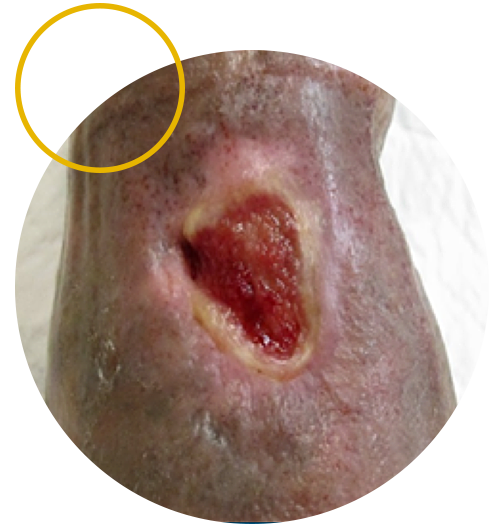A leg ulcer is a long-happening wound that takes more than 4 to 6 weeks to heal. The symptoms of a Venous Leg Ulcer include pain, itching and swelling in the affected leg. There may also be discoloured or hardened skin around the ulcer, and the sore may produce a foul-smelling discharge. Usually this type of ulcer takes place below the knee and above or around the ankles. It is common for this type of ulcer to be irregular in shape with the surrounding skin being discolored or swollen. Venous stasis ulcers are normally red in color and, at times, may be covered with yellow fibrous tissue. If infected, the ulcer may have yellow or green discharge.

Risks
Risks are higher for those with varicose veins, history of blood clots in the legs (deep vein thrombosis), blockage of the lymph vessels, which causes fluid to build up in the legs as well as obesity and smoking.
Causes
Patients who have poor blood circulation from the legs, such as from venous insufficiency. Veins have one-way valves that keep blood flowing toward the heart. In venous insufficiency, the valves are damaged, and blood backs up and pools in the vein.
In caring for Venous Leg Ulcer it is important to seek medical help. Treatment would include debridement, dressing and compression. The doctors would also recommend compression bandages or stockings to ease the effect of the condition and treat it.